In the last chapter we learned how to reach an upwind destination. By beating. The goal is then … ? Right, windward’s of the boat. But how do we reach a destination that is leeward … ? Right, by bearing away. But when the destination is in the back of our stern or if we want to sail a triangle?
We have to jibe. By jibing the boat moves through the wind with the stern. But we have not yet talked about this topic. There is a possibility with the resources we already learned in the lessons so far. The Quick-turn. Some call it Q-turn, because with a lot of imagination it looks like the letter Q from above.
But how do we sail the Quick-turn? Imagine our boat sails course close-hauled and wants to reach a destination that is leeward in the back of the stern. (The buoy on figure 56.) When it now tacks it does not reach its goal. It would still have to move through the wind with the stern afterwards, but we do not yet know how to do that. What could be another possibility … ?
Right, first we bear away. Which course would come next … ? Right, beam reach. (Figure 57) Do we pull the tiller or do we push it … ? Right, we pull it. Do the sails have to be eased or to be hauled … ? Right: The sails, respectively the sheets have to be eased. The jib as far until it starts flattering and then be pulled back till it fills again. The mainsail has to be pulled until the block of the mainsheet that is closest to the boom is above the leeward edge of the hull.How does the command go? Right: “Ease sheets to beam reach!”
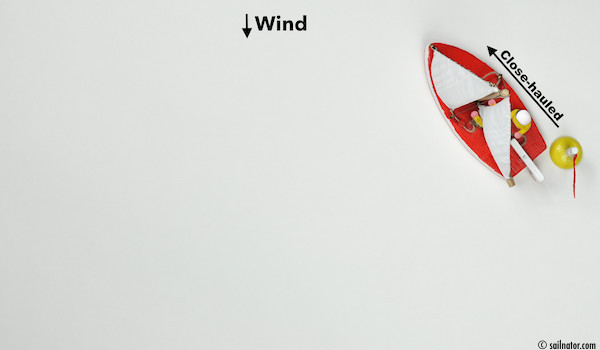
Figure 56: If the boat sails close-hauled, …
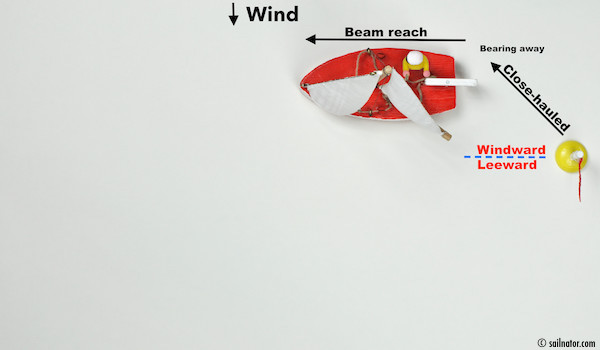
Figure 57: … it has to bear away to beam reach first …
But on beam reach we still sail away from the buoy. So we have to bear away again. How is the next course called … ? Right, broad reach. (Figure 58) The command is … ? Right: “Ease sheets to broad reach!” The mainsail has to be opened and the helmsman has to bear away till the jib collapses and then he heads up till the jib fills again.
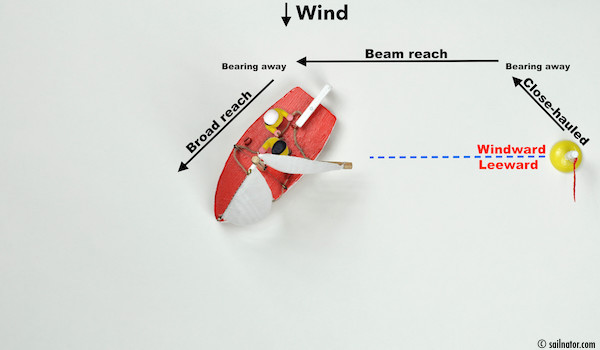
Figure 58: … and then is has to bear away to broad reach to get leeward of the buoy.
At some point we are on the same height as the buoy. We go on sailing a little bit further till we are leeward of it and head up for tacking. We head back up to beam reach (Figure 59), after that to close-hauled (Figure 60) and tack.
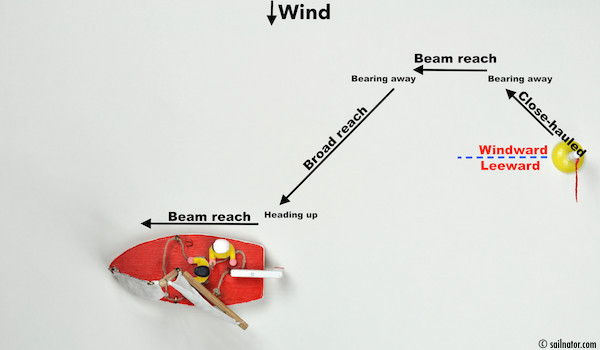
Figure 59: Then it has to head up to beam reach again …
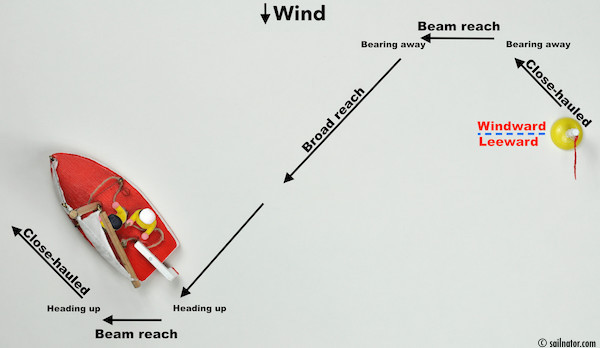
Figure 60: … and tacks from course close-hauled …
To save us from saying the commands: “Sheet in on beam reach!” “Sheet in for close-hauled!” “Ready to tack!” “Ready” and “Tacking” we just call at the beginning of the manoeuvre: “Ready for Quick-turn!” The crew answers: “Ready!” and the helmsman then says: “Helm’s alee!” “Trim sheets!”
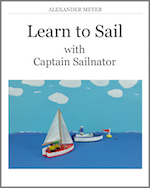 This online sailing course has also been published as ebook and paperback. For more information click here!
This online sailing course has also been published as ebook and paperback. For more information click here!
You can download the Ebook for example at:
iTunes UK & iTunes US | iBooks for iPad and Mac
Amazon.com & Amazon.co.uk | Kindle-Edition
Google Play | for Android
The paperback is available for example at:
Amazon.com | Amazon.co.uk
The experienced crew now knows that we go from broad reach via beam reach to close-hauled and immediately tack afterwards. He trims the sheets independently with no further commands. In this case that means that he hauls the sails to the respective course and pulls the sheet on the other side while tacking. Meanwhile the mainsail has to be trimmed as well. If we forget that we lose momentum in the manoeuvre and might get stuck in irons. Or, if tacking works with the sail wide open, the boom flies from one side to the other. That can cause damage to the rig or capsizing.
So on the way to close-hauled the sails have to be hauled before tacking can be begun. The tacking during the Quick-turn is then like every tacking manoeuvre. The tiller has to be … ? Right, pushed. The jib sheet has to be released and the new one has to be trimmed.
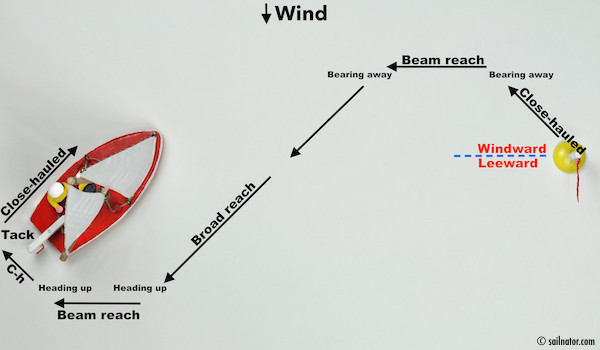
Figure 61: … to course close-hauled on the other side of the wind.
The helmsman has to change sides and sit in opposite to the boom and places the tiller in the middle. Now he looks how his position is relative to his destination. (Figure 61) Can he go on to sail close-hauled to reach it or has he to bear away. If he does that the Quick-turn is perfect. (Figure 62)
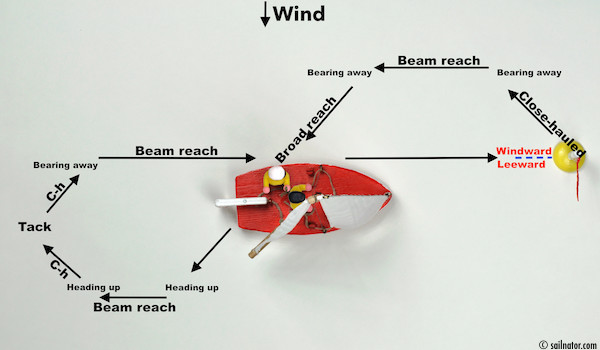
Figure 62: On course beam reach it crosses its own wake and reaches the buoy without jibing.
Watch my stop motion video about the quick-turn →
As we learned with the Quick-turn we are able reach a destination where we actually have to move the stern through the wind. We can use the Quick-turn in strong winds when jibing seems to be too dangerous.
With all we learned till now we can sail not only an eight but also a triangle. (Figure 63) We beat to the windward buoy and bear away to beam reach and broad reach at this point. Then we sail a quick-turn around the next buoy and go to the third buoy on beam reach and broad reach. At this point we tack and beat up again to the windward buoy. Or we sail back to the harbor.
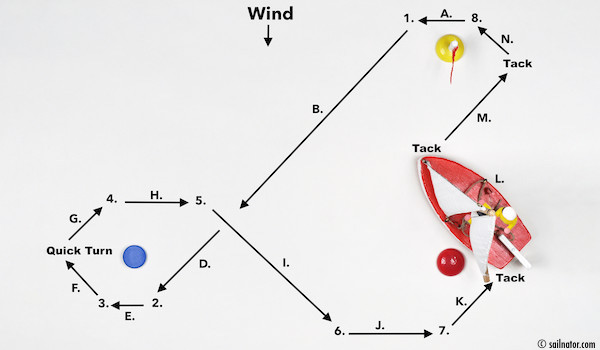
Figure 63: Identify the points of sail that are labelled from A. to N. At the spots that are marked with 1. to 8. the boat heads up or bears away and the sheets are eased or hauled. You will find the solution further down.
Solution to Figure 63: A. Beam reach | B. Broad reach | D. Broad reach | E. Beam reach | F. Close-hauled | G. Close-hauled | H. Beam reach | I. Broad reach | J. Beam reach | K. Close-haul | L. Close-hauled | M. Close-hauled | N. Close-hauled
1. Bearing away: ease sheets | 2. Heading up: sheet in | 3 Heading up: sheet in | 4. Bearing away: ease sheets | 5. Bearing away: ease sheets | 6. Heading up: sheet in | 7. Heading up: sheet in | 8. Bearing away: ease sheets
In the next chapter I explain how to stop a boat by heading into the wind.
← Last chapter | Next chapter →
All chapters: Technical Terms | The theory behind sailing |Close-hauled | Beam reach | Broad reach | Sailing downwind | Tacking | Beating | Quick-turn | Sailing up head to wind | Man overboard | Jibing | Heaving-to | Leaving the dock | Berthing | Rules of the road 1 | Rules of the road 2 | Rules of the road 3 | Reefing | Capsizing